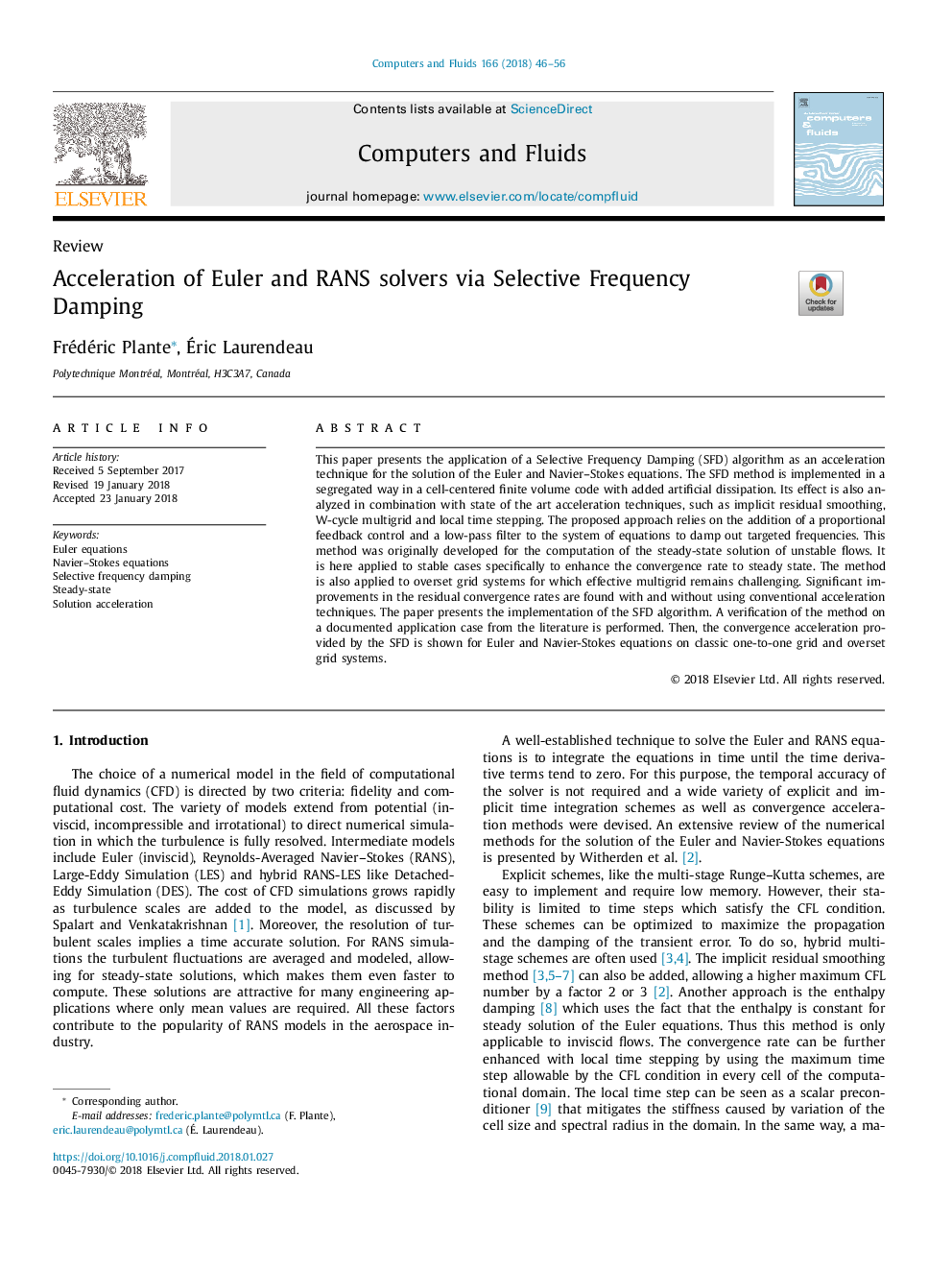| Article ID | Journal | Published Year | Pages | File Type |
|---|---|---|---|---|
| 7156292 | Computers & Fluids | 2018 | 11 Pages |
Abstract
This paper presents the application of a Selective Frequency Damping (SFD) algorithm as an acceleration technique for the solution of the Euler and Navier-Stokes equations. The SFD method is implemented in a segregated way in a cell-centered finite volume code with added artificial dissipation. Its effect is also analyzed in combination with state of the art acceleration techniques, such as implicit residual smoothing, W-cycle multigrid and local time stepping. The proposed approach relies on the addition of a proportional feedback control and a low-pass filter to the system of equations to damp out targeted frequencies. This method was originally developed for the computation of the steady-state solution of unstable flows. It is here applied to stable cases specifically to enhance the convergence rate to steady state. The method is also applied to overset grid systems for which effective multigrid remains challenging. Significant improvements in the residual convergence rates are found with and without using conventional acceleration techniques. The paper presents the implementation of the SFD algorithm. A verification of the method on a documented application case from the literature is performed. Then, the convergence acceleration provided by the SFD is shown for Euler and Navier-Stokes equations on classic one-to-one grid and overset grid systems.
Related Topics
Physical Sciences and Engineering
Engineering
Computational Mechanics
Authors
Frédéric Plante, Ãric Laurendeau,
